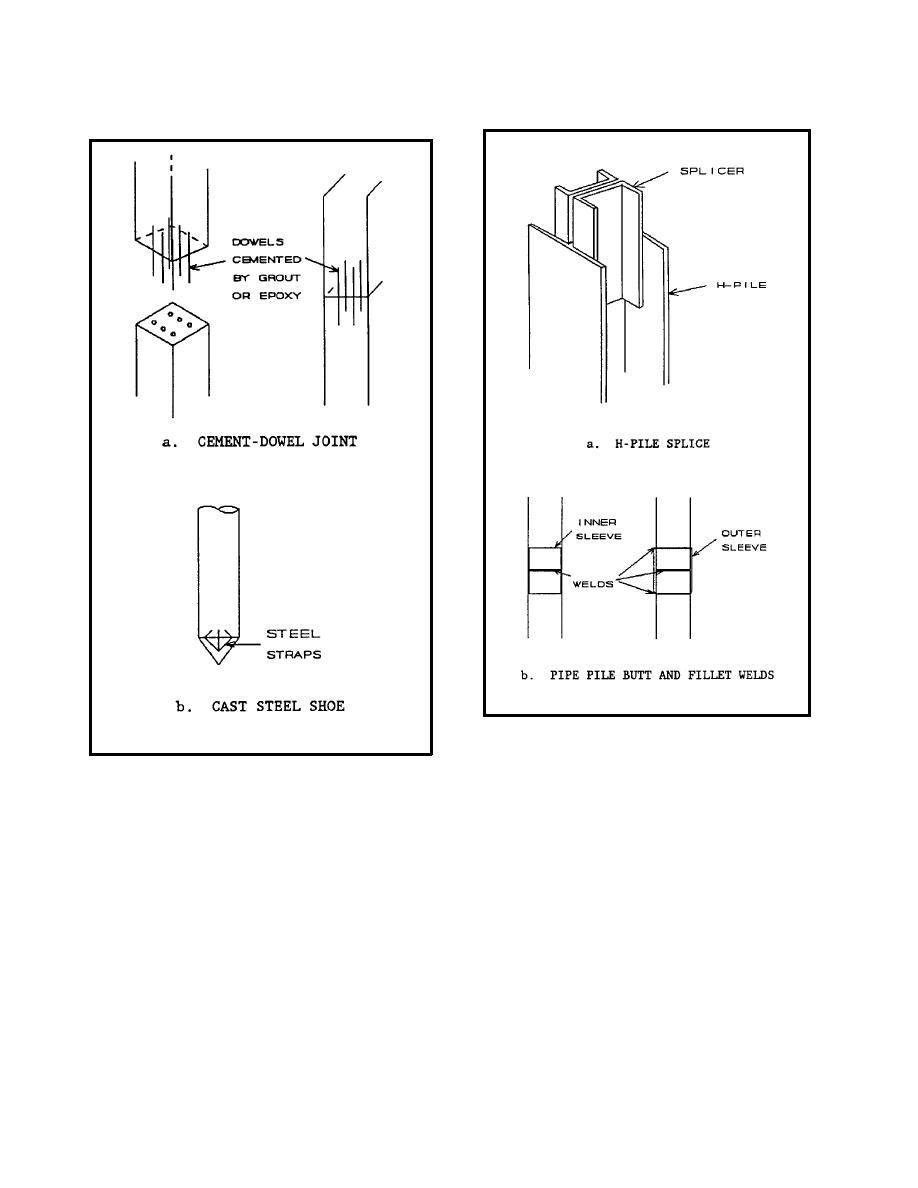
EI 02C097
01 Jul 97
Figure 1-3. Steel pile splices
Figure 1-2. Concrete pile splice and boot
may not be suitable when tolerance is small with respect to
location and where absolute plumbness is required. Table 1-3
significantly affected by corrosion in undisturbed soil.
lists commonly available H-piles together with properties and
Schematics of H-piles and pipe piles are presented in
dimensions.
Figure 1-3.
(b) Steel pipe piles. Commonly used steel pipe piles are
listed in Appendix B together with properties and dimensions.
(a) Steel H-piles. This type can carry larger loads, both
Steel pipe piles are generally filled with concrete after driving
axially and in bending, than timber piles and can withstand
to increase the structural capacity. If the soil inside the pipe is
rough handling. H-piles can be driven into dense soil, coarse
removed during driving, open-end piles in cohesionless soil
gravel, and soft rock with minimum damage, and cause
will cause less soil displacement and compaction, and in
minimal displacement of the surrounding soil while being
cohesive soils will cause less heaving of adjacent ground and
driven. Hardened and reinforced pile tips should be used
nearby piles. If the soil inside the pipe is not removed during
where large boulders, dense gravel, or hard debris may damage
driving, the pipe becomes plugged and acts as a closed-end
the pile. Splices are commonly made with full penetration butt
displacement pile. Criteria are presently unavailable for
welds or patented splicers (Figure 1-3a). H-piles can bend
computing the depth at which a driven, open-end pile will plug.
during driving and drift from planned location. Thus, H-piles
In cases where the foundation contains boulders, soft rock, or
1-6



 Previous Page
Previous Page
